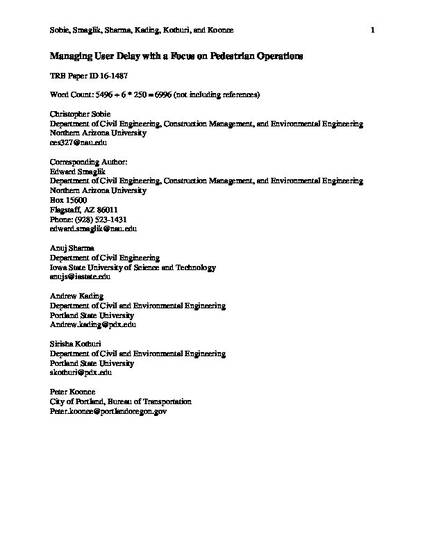
Across the United States, walking trips are increasing. However, pedestrians still face significantly higher delays than motor vehicles at signalized intersections because of the traditional signal timing practices of prioritizing vehicular movements. This study explored methods to reduce pedestrian delay through the development of a pedestrian priority algorithm that selects an operational plan favorable to pedestrian service, provided a user-defined volume threshold has been met for the major street. This algorithm—along with several operational scenarios—was analyzed with Vissim with the use of software-in-the-loop simulation to determine the impact these strategies have on user delays. One of the operational scenarios examined was that of actuating a portion of the coordinated phase, or actuated–coordinated operation. Following a discussion on platoon dispersion and the application of it in the design of actuated–coordinated signal timing parameters, a sensitivity analysis was performed on vehicle extension timers to explore the impact that this coordinated movement parameter has on user delay. In the scenario analysis, it was shown that employing fully actuated (also known as free) operation—either with the designed algorithm or without—was an effective method of reducing pedestrian delay on the minor street while decreasing average intersection vehicle delay for the volumes used in the simulation. The vehicle extension sensitivity analysis showed that shortening the extension timer of an actuated–coordinated phase can reduce pedestrian delay on the minor street without increasing overall vehicle delay. This tool could be used by agencies during coordinated operation to prioritize pedestrians.
Available at: http://works.bepress.com/anuj_sharma1/51/

This is a manuscript of an article published as Sobie, Christopher, Edward Smaglik, Anuj Sharma, Andrew Kading, Sirisha Kothuri, and Peter Koonce. "Managing User Delay with a Focus on Pedestrian Operations." Transportation Research Record: Journal of the Transportation Research Board 2558, no. 1 (2016): 20-29. DOI: 10.3141%2F2558-03. Posted with permission.